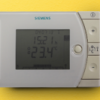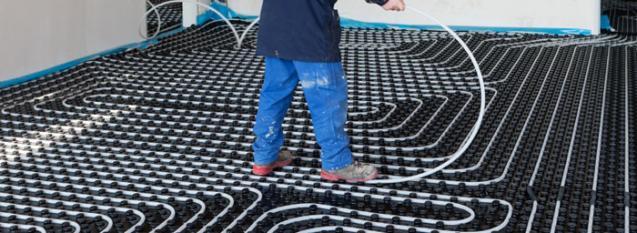
What Could Go Wrong With A Hydronic Slab Heating Installation?
By Cambro Hydronic Heating|December 19, 2013
As with any construction-based installation, a number of issues could arise during hydronic slab heating installation. Even though we don’t want to think about the worse case scenario, it is important that we are prepared for what could happen, as this will ensure that the issue is rectified quickly. Most of the bigger issues arise due to poor coordination with the other trades also working in the home – each of the home’s systems need to work together to provide a comfortable environment for your family.
As you can see, there are a number of issues that could arise during hydronic slab heating installation. They can be prevented, however, by ensuring that you only work with reputable installers with a number of years experience and by keeping the lines of communication with your other trades open. By being aware of each of these issues, you can make sure that you keep an eye on the workers and that they are doing things properly. It will also ensure that you know what to look for should something go wrong.
- Lack of Foundation Insulation
Wet installations (which means that the hydronic tubing is set into wet concrete) use the thermal mass of the concrete itself to radiate heat into the home. In order for this to work well, insulation must be placed below the slab to prevent heat from seeping down into the soil instead of passing up into the home.
- Lack of Heat Reflectors and Improper Insulation
With new technology being developed, it has now become possible for hydronic heating to be added above floor joists (meaning that it can now be installed on second floors). Proper insulation is needed to keep these heated areas separate, whilst heat reflectors are needed to direct the heat to the necessary rooms.
- Improper Flooring
Even though all types of flooring can be used above hydronic slab heating, certain types can lessen the effect on the room. The types that have this effect in particular are carpet and carpet padding. You need to let the flooring company know that you have hydronics and ask the heating company for some recommendations.
- Leaks
Unfortunately, water leaks are one of the biggest concerns for this type of heating. They can be caused in one of two ways – firstly, poor plumbing connections (which cannot be found until the system is pressurized and tested); and, secondly, other trades accidentally putting nails through one of the tubes in the floor.
- Freezing
Because most installations occur when the home is under construction, the heating might be installed but not put to use straight away. If water has been left in the lines after initial testing, however, freezing can occur in the tubes. Testing should occur at several different stages and anti-freeze should be added to prevent this.
- Air in the System
Many people choose to install hydronic heating because it is known for operating silently. If air manages to get into the tubes, however, it can become quite noisy. The presence of air in the system can also corrode plumbing connections and damage pumps, seals and other components, as well as produce scale.
As you can see, there are a number of issues that could arise during hydronic slab heating installation. They can be prevented, however, by ensuring that you only work with reputable installers with a number of years experience and by keeping the lines of communication with your other trades open. By being aware of each of these issues, you can make sure that you keep an eye on the workers and that they are doing things properly. It will also ensure that you know what to look for should something go wrong.

